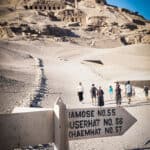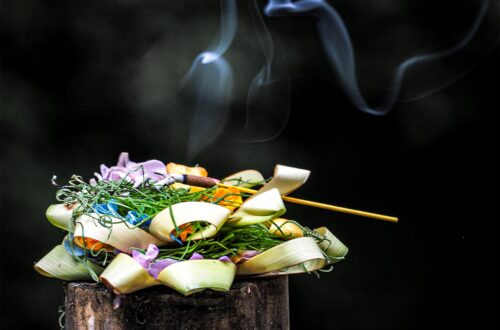
The Ultimate Guide to Food in Egypt
Travelling with kids comes with many questions but a big one for many families is, what will the kids eat?
If you are planning a trip to see the pyramids and curious about the food in Egypt. Well, I’ve got your guide to the most delicious, unusual, and traditional dishes in Egypt.
During our month-long stay in Egypt, we tried it all to bring you the ultimate guide to Egyptian food for kids and fellow travellers and families. From Cairo to Luxor and most. places we went in-between, Egyptian food was delicious, diverse, and had a mild kick of spice that keeps things interesting.
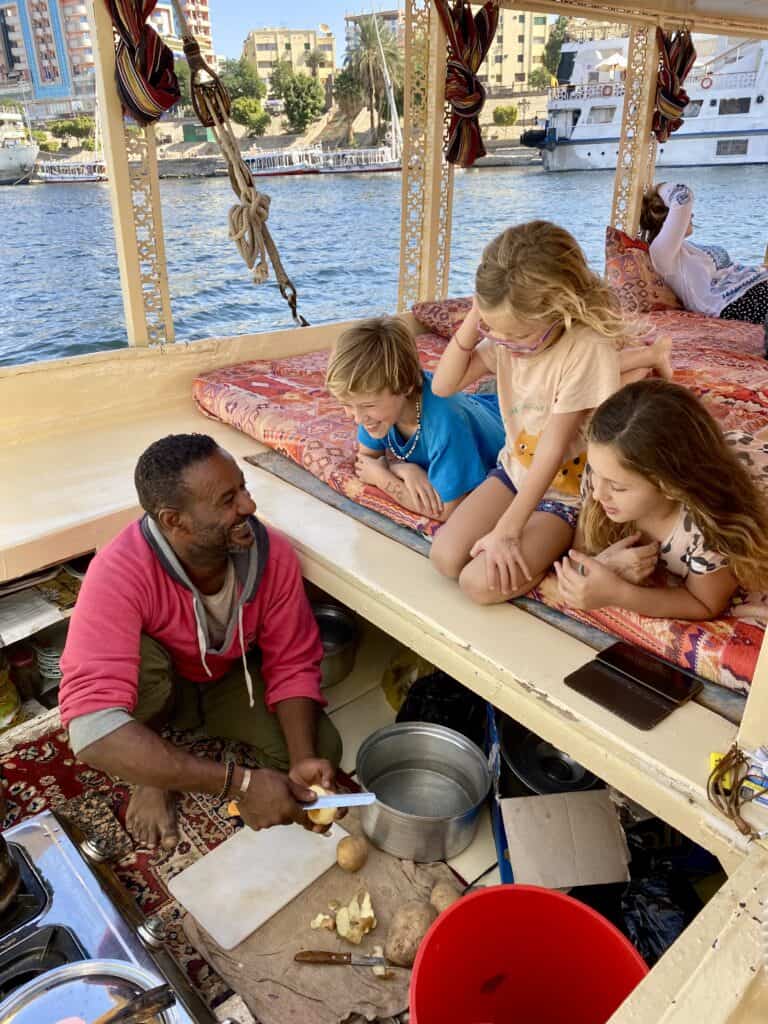
The culinary scene here is a melting pot of influences from all over the world, thanks to Egypt’s unique history and its position as a transcontinental country, spanning Africa and Asia.
It has is a rich and diverse culinary tradition that has been shaped by thousands of years of history and cultural influences. It is a fusion of flavours and ingredients from various civilizations that have left their mark on Egypt, including the ancient Egyptians, Arabs, Ottomans, and Persians. Egyptian food is known for its bold and aromatic spices, fresh ingredients, and hearty dishes that are perfect for sharing with family and friends Your taste buds are in for a treat!
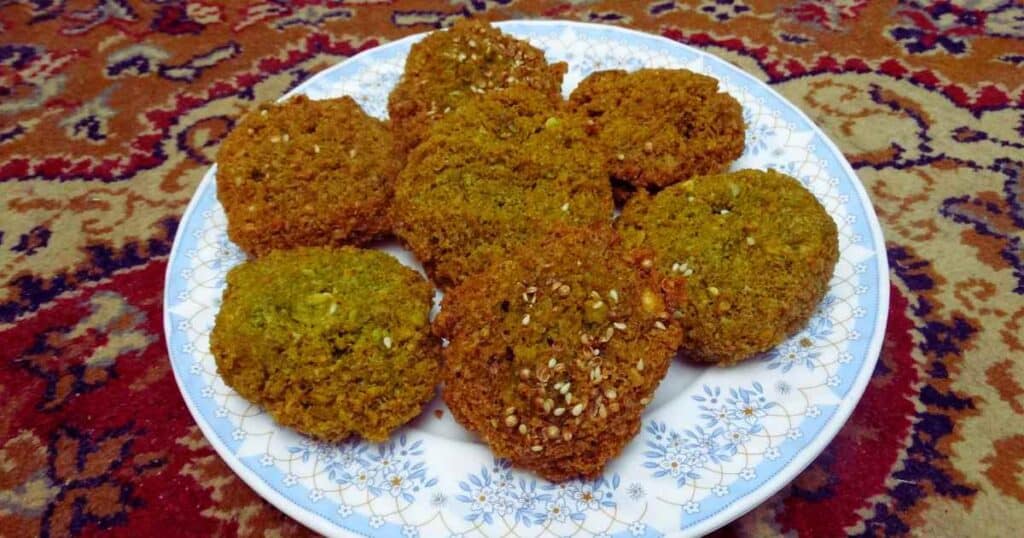
Key ingredients in Egyptian food
When it comes to Egyptian cuisine, you will notice the use of staples like beans, rice, bread, and veggies. Fava beans, in particular, play a main role in many dishes, like the breakfast favourite ful medames. Rice is a usual accompaniment to many meals. And, of course, there’s the ever-present baladi, a flatbread that’s practically the VIP of every Egyptian meal, perfect for scooping up dips and sauces.
Egyptian cuisine serves up a variety of mouthwatering and kid-friendly dishes and if not, you will always be able to find the main kid safe staples or chips and pizza.
Here are our top foods in Egypt to try
Koshari
Koshari is a considered to be the national dish of Egypt although interestingly, the main ingredients aren’t from here. A cheap, filling combination of rice, lentils, macaroni, and chickpeas, topped with a flavourful tomato sauce and crispy fried onions. It’s an easy street food to pick up. Again, not a favourite for our kids, but we liked it.
Falafel
Falafel is another kid-friendly Egyptian food that children are sure to enjoy and super cheap in Egypt. These crispy and flavourful chickpea fritters are often served in pita bread with tahini sauce and fresh vegetables. They make for a tasty and nutritious meal or snack option for kids.
Baladi
Baladi bread, or Egyptian flatbread, is a go-to in Egypt and the Middle East, and it’s not just your average bread. It keeps things simple with a mix of flour, water, and salt, baked to perfection in a wood-fired oven for that unique charred flavour.
Make sure you get to the bakery early for the freshest bread.
This versatile bread is like a culinary chameleon, fitting into various roles. Whether you’re into dips, spreads, stews, or dreaming up sandwiches, wraps, and pizzas, baladi bread is a safe go to.
Hawawshi
Hawawshi is a traditional Egyptian street food that can be a hit with kids. It consists of a pita bread stuffed with a flavourful mixture of minced meat, onions, and spices, then baked or grilled until crispy. It’s a handheld treat that kids can easily enjoy on the go. This was easily one of our favourites, and whilst we mostly avoided meat, we would order this whenever we came across it.
Molokhia
Molokhia is a nutritious and kid-friendly Egyptian dish made from the leaves of the jute plant. It is typically cooked with chicken or beef and served over rice. There are a few major issues here. First, it’s appearance. Obviously being green sets off the internal alarm system for the majority of kids but if they can get past that you have a nutrition packed healthy soup. The second is it’s slightly gelatinous (or slimy as our kids told us) texture. This was something our kids couldn’t deal with so a pass from the Boston Kids.
Mahshi Warak Enab
This one had to be on this list although we did find it a little elusive to find after our first taste. Interestingly, this was by far our eldest kids favourite food. It is a type of stuffed vegetable dish that is made with grape leaves that have been stuffed with a flavorful rice and meat mixture. The dish is typically served with yogurt, tahini sauce, or a simple tomato sauce, a little like the dolmades of Greece and Turkey.
Ful Medames
Ful Medames is a traditional Egyptian breakfast dish but can be eaten at any time of the day. It is made from cooked fava beans seasoned with olive oil, lemon juice, garlic, and spices. It’s a healthy start to the day but again, my kids weren’t convinced by its appearance.
Sambousek
Sambousek is a popular Egyptian appetizer that is great for kids. Sambousek is essentially a stuffed pastry, and the stuffing can vary, making it a versatile and tasty snack. They are usually filled with a savoury mixture of minced meat, onions, and spices, then baked or fried until crispy.
Basbousa
Basbousa, is a classic Egyptian dessert whipped up from semolina, sugar, and coconut, all soaked in a sweet syrup. It has sugar, the kids love it.
Also, give Om Ali a whirl. It’s a little like a bread-and-butter pudding, but less stodgy and made with puff pastry, milk, nuts, and raisins.
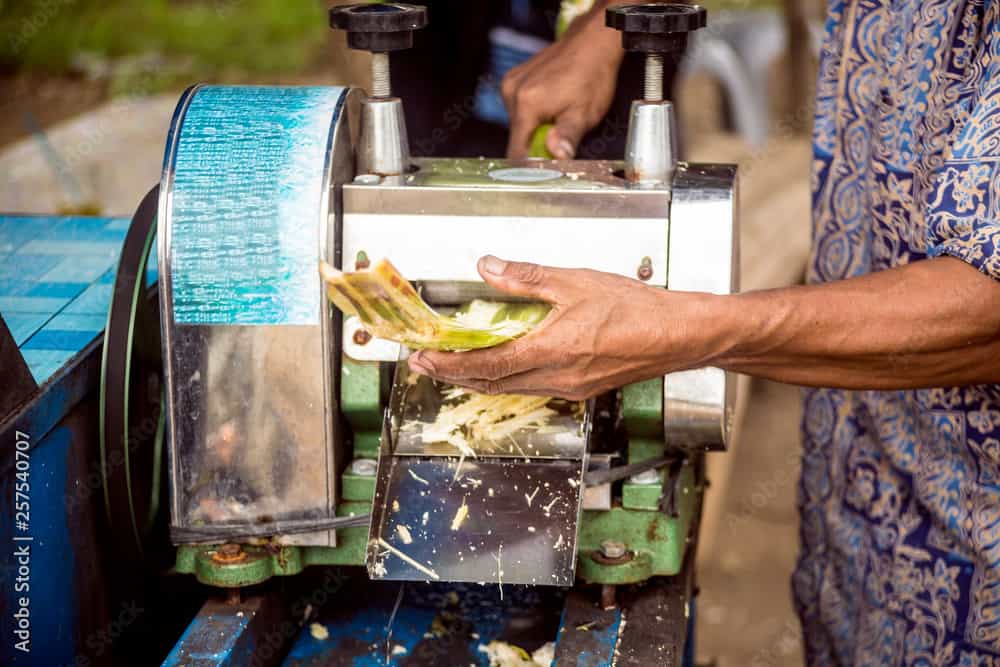
Drinks
Sugarcane juice
Sugarcane juice is a very popular beverage in Egypt. The process is straightforward – get the juice straight from the sugarcane plant and have it fresh. The juice is extracted by crushing the sugarcane stalks using a machine or a traditional press.
Towards the end of our trip, our kids would gnaw on sugar cane sticks. It has a sweet taste but at the same time feels super healthy when you drink it. Surprisingly, our sweet toothed kid wasn’t a fan, but we drank these daily as we read it has health benefits. It is a rich source of natural sugars, vitamins, and minerals. The juice is packed with nutrients like calcium, magnesium, potassium, and iron. It is also low in fat and cholesterol-free, making it a healthier alternative to sugary sodas or artificial fruit juices.
Water
Do not drink the tap water! I wouldn’t brush my teeth in it either. Buy bottled water from local shops.
Beer, Wine and Spirits
Alcohol consumption is legal in Egypt for non-Muslims aged 21 and over.
Beer, wine, and spirits are available in hotels, restaurants, bars, and liquor stores. However, alcohol is not widely consumed in Egypt, and it is considered to be taboo in some circles. It’s also more expensive than many other places.

cairo with kids?
Dietary restrictions
Obviously if you have an allergy, intolerance or restriction it’s important to be mindful what you are eating.
Many traditional Egyptian dishes contain nuts, particularly in desserts and pastries.
There are lots of options for vegetarian and vegans but clarity any ingredients before ordering.
Make sure to get any specific dietary needs translated into Egyptian if possible to have handy to show at any cafes or restaurants.
Spicy food
Of all the cuisines we have tried, surprisingly, Egyptian food is rarely spicy. It’s packed full of herbs and spices but rarely is hot and spicy.
The dreaded upset stomach
Ever been on a family trip, only to end up playing rock-paper-scissors over the only bathroom in your hotel room? Yep, not just us then. Adjusting to a new cuisine, especially Egypt’s delicious but distinct dishes, can be a rollercoaster for our stomachs. So, how do we have our Koshari and eat it too, without risking a bout of the trots?
One word – caution. By sticking to food you *know* has been prepared hygienically, you’ll save your stomach a lot of unwanted stress. A general rule of thumb with restaurants and street food is to see where the locals go. If it’s busy that means there is a quicker turnover of food which is likely (although not guaranteed) to be fresher.
And what about water, you ask? Simple. Tap? Nope. Bottled? Bingo! This tiny swap can save you from risking waterborne illnesses. Remember, it’s not just about what you eat, but also what you drink!
But let’s say, hypothetically, someone in the family does succumb to tummy trouble – what then? Don’t panic! Hydrate, hydrate, and then hydrate some more. Clear fluids such as water and herbal tea will be your best friends. Swap spicy shawarma for bland basics like rice and toast. And while over-the-counter meds can offer relief, always get a healthcare professional’s green light before popping any pills, especially for the little ones.
On our trip, our youngest got sick, and then being the strong-willed child she is, refused medicine and hydration. Day 4 and we made our way to the local hospital where she was given an IV of medicine and to hydrate and she was back to normal in 20 minutes. If you have any concerns, always seek medical advice.
Last but not least, don’t underestimate the power of handwashing. Pre-meal, post-bathroom, or just because, make sure everyone’s scrubbing up regularly with soap and water. Pack a pocket-sized sanitizer for emergencies and a basic first-aid kit too.
So, part of the adventure is enjoying Egypt’s culinary offerings. Just be mindful and prepared, and your family’s Egyptian food voyage will be unforgettable… for all the right reasons!
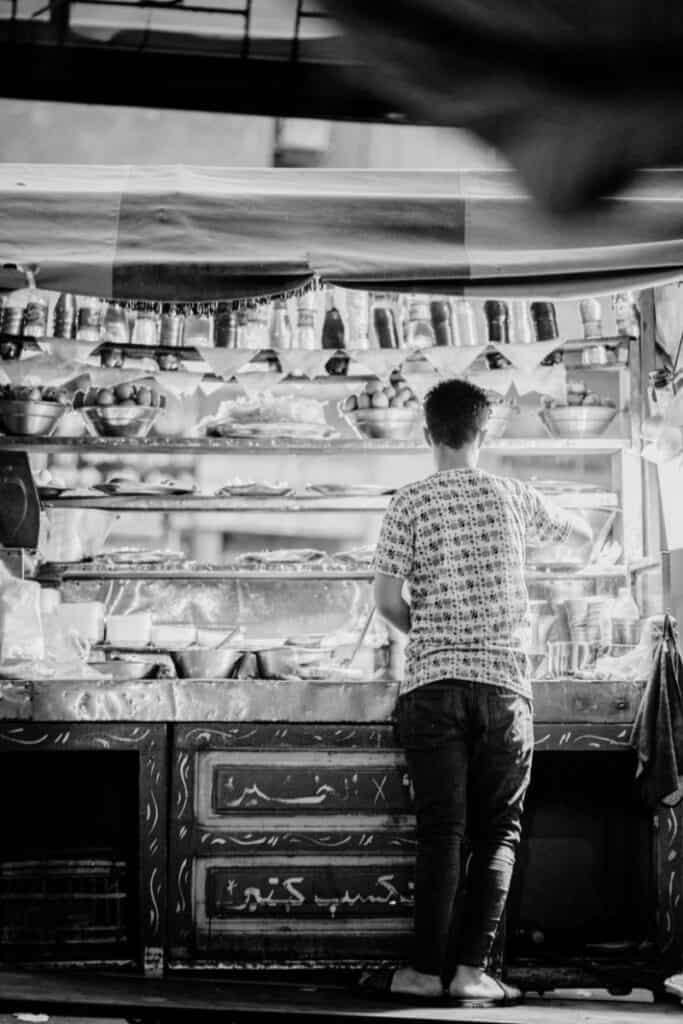
Where to Find Egyptian Food
Finding local food can be tricky, there are lots of restaurants set up for tourists and this is where you guide will likely take you. After some persuasion, we convinced our guide to take us to the places she ate and that is where we sampled some amazing Egyptian food.
Recommended Places to Eat in Cairo
Mama’s Kitchen:
https://maps.app.goo.gl/c5AVWfjYE494H7BG9
This family-run restaurant is a popular spot for locals and tourists alike. Traditional dishes and big portions.
Khan el-Khalili: This historic market is a must-visit for any visitor to Cairo, and it’s also a great place to find some delicious and authentic Egyptian food.
Cairo Kitchen Zamalek
https://maps.app.goo.gl/tmFtHsWvGYRtySP96
Cheap, cheerful and packed full of locals.

Luxor with kids
Recommended Places to Eat in Luxor
Wanna’s art café- West Bank
https://maps.app.goo.gl/NogHUTBXC82NeN6a8
Wannas Cafe in Luxor is the best spot for vegetarian delights, offering fresh ingredients, rich flavours, and exceptional hospitality. Everything is crafted in-house upon request, making each visit a culinary journey. The owner, Sayeed, not only serves up wonderful vegetarian dishes but also creates a warm and inviting atmosphere. For those seeking a unique experience, Wannas Cafe stands out from the flashy restaurants along the Nile Road, offering a more authentic and worthwhile dining adventure.
El Tarboush– East Bank
https://maps.app.goo.gl/QKXfdszbQGVZqVbx7
A Lebanese restaurant on the East Bank. Delicious food although pricier.
Nour El Nil Restaurant– East Bank
https://maps.app.goo.gl/qNJfUPT2Zkt3EdZm9
This restaurant offers stunning views of the Nile River and serves a wide variety of Egyptian cuisine, including falafel, koshary, grilled meats, and seafood. The atmosphere is relaxed and friendly, and the prices are reasonable.

Meet the author
Lisa is the founder of Boston Tribe Travels. She has lived and travelled abroad for the last 15 years, visited more than 30 countries and has done most of that with her husband and two children. As a full time travel family, they like to travel slow, worldschool and seek new adventures. From living in Borneo for 5 years to backpacking South America, Lisa shares a wealth of travel experience to empower more families to travel and learn together.




